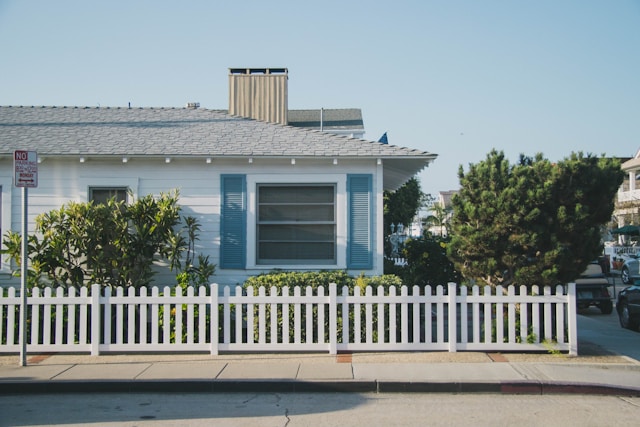When you’re planning to sell—or simply exploring ways to enhance your property—upgrading key exterior elements can be highly appealing. For many homeowners, the question becomes: Do new windows or siding actually boost resale value, or is the real return less tangible? The simple answer is that both can modernize your home’s appearance, raise energy efficiency, and sometimes deliver a strong return on investment. But as with any major project, there are nuances to consider so you can choose the optimal path for your budget, timeline, and local market conditions.
Below, we’ll break down how windows and siding can influence a home’s selling price, offer different upgrade scenarios, and explore factors that affect whether these projects recoup their costs. By understanding the financial (and lifestyle) impacts, you’ll be better equipped to decide if new windows or siding—perhaps even both—are the right upgrades to set your home apart.
Why Curb Appeal Matters
Curb appeal has a powerful effect on prospective buyers. It’s the first impression, the visual statement that invites them in or keeps them at a distance.
- Immediate Impact: Attractive siding and updated windows convey pride of ownership. They suggest the home has been well-maintained, reducing perceived buyer risk.
- Neighborhood Comparisons: If similar homes in your area recently upgraded exteriors, you may lose competitive edge by postponing your own refresh.
- Professional Appraisals: While appraisers weigh many factors (e.g., square footage, comparable sales, and overall condition), external aesthetics can also indirectly shape their final assessment of livability and overall property integrity.
According to the National Association of Realtors, improvements to a home’s exterior (including roofing, siding, and windows) rank among the top upgrades that attract potential buyers quickly. If your home’s in a market with many listings, even small exterior changes set you apart.
The Significance of Window Upgrades
Energy Efficiency and Buyer Perception
Modern windows have come a long way in regulating indoor temperatures efficiently.
- Saving on Utilities: Double- or triple-pane windows with Low-E coatings and gas fills (like argon) can reduce heating and cooling costs significantly, especially if replacing older single-pane windows.
- Increased Comfort: Less draftiness and better noise insulation, which prospective buyers notice during a walkthrough. If your area is noisy or experiences extreme climates, robust windows become an immediate selling point.
- Buyer Peace of Mind: If they see fresh, well-sealed windows, they assume fewer short-term maintenance concerns—a key factor for first-time buyers.
Calculating Return on Investment (ROI)
Window replacements can be pricier than many interior updates, so owners often wonder if that money comes back during a sale. While results vary, some industry reports suggest you can recoup around 70%–80% of your costs, depending on:
- Local Market Dynamics: In a hot real-estate market with many eco-conscious buyers, energy-efficient windows may command a premium.
- Quality and Aesthetics: Mid-range or high-quality windows installed properly tend to hold more appeal than low-budget replacements.
- Regional Climate: Buyers in cold or highly variable climates pay closer attention to windows’ insulation ratings, giving you a stronger rationale for higher listing prices.
Factors to Weigh Before Replacing
- Age of Current Windows: If yours are still functional, sealed properly, and not exhibiting condensation or severe drafts, the cost to replace might not be as beneficial. In that case, simple fixes—like re-caulking or adding storm windows—could suffice.
- Neighborhood Norms: If adding premium wood-clad windows to a simpler starter home, you risk over-improving for the area, making it harder to recoup costs upon sale.
- Aesthetic Integration: Choose window styles that blend with your home’s architectural style. Replacement windows that clash with overall design can be off-putting.
The Impact of New Siding on Home Value
Enhancing Appearance and Durability
Siding acts as a protective shell and a major visual component of your home. Worn, faded, or cracked siding can signal neglect, while new siding suggests careful upkeep.
- Immediate Face-Lift: Fresh siding—whether vinyl, fiber cement, or engineered wood—drastically changes curb appeal. Colors can shift a home from dated to modern.
- Protection from Elements: Updated siding often features advanced weather-resistant finishes, preventing rot, mildew, and insect damage. Potential buyers who catch these upgrades see fewer potential repair worries.
- Extended Lifespan: With high-grade materials, you might add decades of low-maintenance durability. This longevity is appealing whether you plan to sell soon or not.
ROI for Different Siding Types
From budget-friendly vinyl to upscale fiber cement, each siding choice has a distinct cost and potential returns.
- Vinyl Siding: Often recoups 70%–80% of its cost upon sale, especially if you select mid-range or better quality. Vinyl’s affordability and variety of color options make it a favorite for many American suburbs.
- Fiber Cement Siding: Tends to carry a heavier upfront price but is revered for longevity, resistance to pests, and a modern look that can increase perceived home value. In many markets, it logs returns around 75%–85%.
- Engineered Wood: Provides the aesthetic of real wood without the same upkeep. Returns can match or exceed those of vinyl in neighborhoods favoring a more upscale, natural look.
Potential Challenges
- Upfront Expense: Siding a whole house can be costly, especially if your home has intricate architectural details. Make sure you have quotes from multiple installers.
- Local Trends: If your neighborhood favors authentic wood siding for older, historic homes, opting for modern vinyl might clash with the overall aesthetic. This mismatch can negate some resale gains.
- Timing Your Investment: If you plan to move within a year but your existing siding is only mildly worn, minor repairs and a fresh coat (in the case of paintable siding) might close the gap without large expenses.
Comparing Windows vs. Siding as a Value Driver
Homeowners sometimes ask which upgrade is more profitable if they can only tackle one. While there’s no universal rule, we can explore a few scenarios:
Scenario A: The Moderately Outdated Home
- Windows: Assume they’re single-pane, older frames with some visible wear. Upgrading could cut energy bills and attract buyers seeking efficiency.
- Siding: It’s in decent shape with minor peeling. A power wash or modest repaint could refresh the exterior without total replacement.
- Decision: Replacing the windows might net the bigger ROI. You address energy concerns and curb older, potentially leaky windows in one move. Meanwhile, the siding might manage with a cost-effective cosmetic fix.
Scenario B: The Poor Curb Appeal Issue
- Windows: Perhaps double-pane and still functional. They date back 10–15 years but aren’t causing significant drafts.
- Siding: Vinyl is warped and badly stained, or wood siding is rotting in places with peeling paint.
- Decision: A full siding replacement can drastically boost your home’s appearance. This solution solves visible blemishes, halts water intrusion, and signals strong maintenance to prospective buyers.
Scenario C: High-End Market Expectations
- Windows: Wood-framed windows may be in passable shape but no longer “luxury grade.” They lack modern coatings, and sashes stick or rattle.
- Siding: Outwardly fine yet worn finishes hamper the home’s overall premium vibe.
- Decision: For a top-tier property, prospective buyers often expect top-tier condition. Both window and siding upgrades could be valuable. If forced to choose, you might consult a local real-estate expert on which detracts more from premium status.
Financial Considerations and ROI Breakdown
Cost vs. Value Reports
Several industry sources like Remodeling’s Cost vs. Value Report publish annual data on how various home-improvement projects pay off. Typically, exterior upgrade projects—siding, windows, doors, even minor roofing—rank high in recouping costs, often between 70%–90%. While these are national averages, your local real-estate climate can shift the true return.
Energy Savings and Incentives
- Utility Bills: According to the U.S. Department of Energy, leaky or outdated windows could significantly increase heating and cooling use. A more efficient set can reduce monthly bills—an attractive selling point for new owners.
- Tax Credits and Rebates: Certain states or local power companies offer rebates for installing ENERGY STAR® windows. Additionally, some homeowners can find tax incentives for energy-efficient siding materials. These benefits reduce your net project cost and sweeten the intangible ROI over time.
Increased Market Competition
In some neighborhoods, sellers emphasize updated exteriors in listings and advertisements. If your main competition is freshly renovated homes, failing to match that standard might cause your property to linger longer on the market or require price concessions. In that sense, upgrading windows or siding is partially about keeping pace with local buyer expectations.
Factors That Make an Upgrade More Successful
Quality of Installation
Whether windows or siding, a poor installation can undermine performance, cause aesthetic issues, and even void warranties. Hiring a qualified contractor with solid references ensures you reap the intended ROI and buyer appeal.
Coordinating Color and Style
- Siding and Window Coordination: If upgrading both, make sure chosen siding colors and window frame finishes complement each other. Even if tackling one project at a time, keep future possibilities in mind so you’re not locked into color clashes.
- Neighborhood Harmony: Standing out is good, but overtly clashing with a neighborhood’s style could alienate potential buyers. Strike a balance between personal taste and community context.
Timing and Seasonal Practicalities
- Off-Season Discounts: Sometimes contractors offer promotions in cooler months when exterior work slows. Scheduling your project then could trim your costs.
- Listing Dates: If selling soon, finish your exterior upgrades well ahead of listing so that the project is complete—and the yard is tidy—when showings begin.
Consider Partial Upgrades
Maybe your budget doesn’t stretch for a full reskin or every window. Selective enhancements might pay dividends:
- Front-Facing Only
- If side or rear siding is in okay shape but the front is severely faded, re-siding the most visible parts can elevate curb appeal quickly. Some buyers notice the front façade first and may not be as concerned if other sides are in decent shape.
- Minimize the Window Scope
- Prioritize windows in the front rooms or areas that see the most foot traffic or are prone to drafts. Pay attention to windows near the entrance or high-usage living spaces, improving comfort where it’s most noticeable.
- Combine with Trim or Landscaping Refresh
- Sometimes, adding new shutters or painting trim can complement partial siding fixes. Low-cost landscaping enhancements can also boost the visual effect of new siding or windows, often at a minimal incremental expense.
Real-World Example: Before and After
Imagine a homeowner, Sarah, who’s preparing to sell in a competitive suburban market. Her home has 25-year-old windows—single-pane with slight condensation—and aging vinyl siding with visible discoloration.
- Initial Estimate
- Contractors project around $18,000 for vinyl siding replacement (including removal and disposal) plus $10,000 for replacing her 10 windows with double-pane, Low-E models.
- Real Estate Consultation
- A realtor advises that upgraded siding alone could dramatically improve curb appeal. However, the windows are a sticking point for buyers suspicious of potential high utility bills.
- Final Decision
- Sarah refinances to afford both projects at once, resting on local data that suggests a high chance of recovering much of that investment in a brisk market.
- Outcome
- Her fully renovated exterior draws multiple offers soon after listing. Buyers mention the updated windows and siding as major draws. While recouping 100% of the cost is unrealistic, Sarah receives an offer significantly above what she might have fetched otherwise, closing the deal quickly.
This scenario underscores how, in certain markets, tackling both windows and siding can provide synergy in buyer perception and real value—especially if the old versions are clearly outdated.
Maintenance Advantages
Less ongoing work
- New Siding: Modern vinyl or fiber cement typically just requires washing with a hose to maintain looks. Wood siding can still be chosen for premium aesthetics but demands more frequent painting or staining.
- Windows: Up-to-date materials (e.g., vinyl or fiberglass frames) rarely need refinishing, and tilt-in sashes make cleaning simple.
Avoiding Water Damage
- Seals and Caulking: Freshly replaced windows and siding mean new flashing, seals, and gaskets. This reduces risk of leaks—a major buyer concern.
- Mold and Rot Prevention: Properly installed, higher-quality exteriors reduce infiltration, hence reducing the chance of moisture-sourced problems.
A robust, lower-maintenance exterior can motivate buyers to pay more, factoring in fewer potential repairs after move-in.
Making the Choice That Fits Your Goals
If You’re Selling Soon
- Cost-Effectiveness: Evaluate whether partial replacements or strategic upgrades can achieve the needed visual framework.
- Compare Competitive Listings: If local comps mostly feature modern siding, you’ll likely gain from matching that standard.
- Consult with a Realtor: Professionals who consistently sell in your neighborhood can give data-backed counsel on your ROI expectations.
If You Plan to Stay Long-Term
- Comfort and Utility Savings: Even if ROI is uncertain, you reap energy savings and enjoyment over many years.
- Staged Upgrades: Tackle the bigger eyesore first—be it siding or windows—while planning finances to follow up with the second.
- Personal Aesthetic Preferences: If you plan on living in the home for a decade or more, pick what you’ll love looking at every day, not just what a buyer might prefer.
Additional Resources
- Remodeling’s Cost vs. Value Report – Yearly data comparing costs and resale returns for leading home renovation projects.
- ENERGY STAR Windows – Federal guidelines on energy-efficient windows.
- Vinyl Siding Institute – Information on material performance, color choices, and best practices.
Final Thoughts
New windows and updated siding both present compelling benefits, from boosting your home’s resale value to improving energy efficiency and aesthetic charm. While the raw ROI may vary—a function of local market factors, condition of existing materials, and buyer preferences—few exterior projects can transform a home’s first impression as dramatically as these. By aligning your upgrade choices with your personal goals (resale or long-term comfort), selecting quality materials, and prioritizing proper installation, you position your home to stand out competitively and remain a secure, pleasant place to live.
When uncertain about exactly how these upgrades will impact your home’s valuation, consult with realtors, compare local listings, and weigh your personal timeline. Done with a strategic approach, replacing windows or siding can be a valuable investment—bolstering not just curb appeal, but also your home’s durability, comfort, and future marketability.




